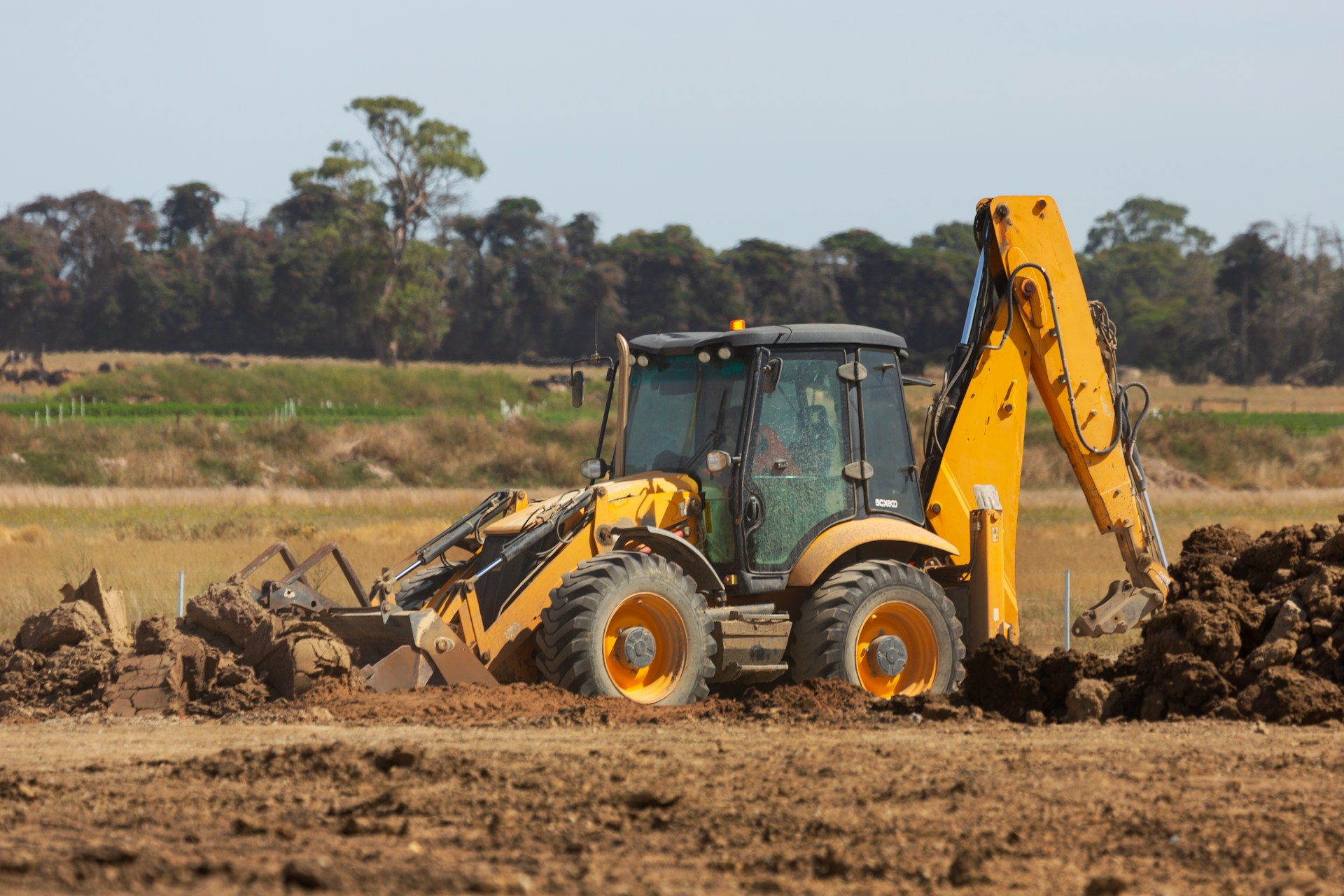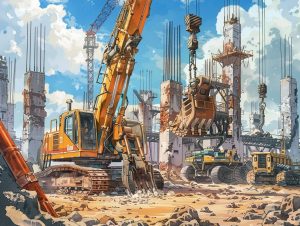If one is in the business of renting out machinery to others, they may have encountered the term “dry hire insurance.” This type of insurance is essential for safeguarding oneself and one’s equipment from potential risks and liabilities.
This article will delve into the definition and purpose of dry hire insurance, the types of machinery covered, factors to consider when buying a policy, and how to acquire the required coverage.
Continue reading to discover all the essential information about dry hire insurance.
Understanding Dry Hire Insurance
Understanding Dry Hire Insurance involves comprehending the key aspects of insurance coverage in the context of equipment rental agreements.
These insurance policies play a critical role in safeguarding the interests of both the equipment owner and the renter. For the equipment owner, having insurance coverage provides legal protection by ensuring that any liabilities arising from the rented equipment are covered. On the other hand, for the renter, insurance offers financial protection against potential damages, losses, or theft that may occur during the rental period. These policies often come with specific coverage limits that outline the extent of protection offered, helping to manage risks for all parties involved in the transaction.
Definition and Purpose of Dry Hire Insurance
Dry Hire Insurance is a policy that provides coverage to protect both the equipment owner and the hirer in cases of damage, liability, or loss during the rental period.
This type of insurance is important in the equipment rental industry as it helps mitigate risks for both parties involved in the transaction. Typically, dry-hire insurance policies outline specific terms and conditions regarding the coverage provided. Common aspects covered include damage to the rented equipment, theft, or accidental loss. Understanding the liability aspects is crucial, as the policy may specify the extent to which each party is responsible in the event of damage or loss. Rental period restrictions are often enforced to ensure that equipment is returned promptly and in good condition.
Types of Machinery Covered by Dry Hire Insurance
Dry Hire Insurance provides coverage for a variety of machinery and equipment, offering protection against damage, breakdowns, and unexpected events. This insurance typically includes coverage for a range of machinery like excavators, bulldozers, cranes, forklifts, generators, and more. It is essential for businesses involved in dry hire arrangements to have insurance to minimize financial risks related to machinery malfunctions or accidents.
Machinery breakdowns can result in expensive repairs and downtime, impacting project operations. With comprehensive insurance coverage, businesses can protect their rental assets and ensure they are adequately covered in case of unforeseen incidents.
Common Types of Machinery and Their Risks
Dry hire insurance typically covers a range of machinery types, including excavators, forklifts, generators, and cranes. Each of these machines presents distinct risks related to breakdowns, maintenance issues, and operator errors.
Excavators, for example, play a crucial role in construction projects but may experience breakdowns due to heavy usage or inadequate maintenance. Regular servicing and inspections are necessary to prevent costly downtime.
Forklifts also come with their own set of risks, such as accidents resulting from operator mistakes or mechanical malfunctions. It is crucial to ensure that operators are well-trained and adhere to safety protocols to minimize these risks.
Generators are essential for providing backup power, and any breakdown can disrupt operations. Having insurance coverage can help mitigate financial losses in the event of sudden malfunctions or damages, protecting businesses from unexpected repair expenses.
Factors to Consider when Purchasing Dry Hire Insurance
When purchasing dry hire insurance, it is important to consider various factors like coverage options, policy terms, excess amounts, and premium costs to ensure sufficient protection.
One of the key factors to assess when choosing a dry hire insurance policy is the variety of coverage options available. Liability protection is a crucial aspect to examine as it helps protect against legal claims in case of accidents or damages during the hire period. Damage waivers can offer additional peace of mind by releasing you from financial responsibility for specific types of damage. Understanding excess coverage is also essential as it dictates the amount you must pay out of pocket before the insurance comes into effect.
By carefully reviewing and understanding the terms and conditions of the insurance policy, which include information on excess amounts and premium calculations, you can make informed decisions and ensure that you have adequate protection.
Coverage Options and Exclusions
Insurance options for dry hire can vary, encompassing waivers for excess amounts, deductibles, and liability protections, as well as delineating exclusions related to property damage and third-party liabilities.
Waivers commonly found in dry hire insurance policies provide the opportunity to decrease or eliminate the excess amount owed in the event of a claim, offering reassurance to the hirer. On the other hand, deductibles represent the portion of the claim total that the policyholder must cover before the insurance coverage becomes effective. Liability protections are vital as they address legal obligations stemming from accidents or injuries.
Typical property damage exclusions may involve issues such as wear and tear or damage resulting from misuse, while exclusions related to third-party liabilities often pertain to disputes with subcontractors or vendors. It is crucial for individuals or businesses entering into dry hire agreements to thoroughly review and understand the terms and conditions of their insurance policy to ensure they possess adequate protection.
 How to Obtain Dry Hire Insurance
How to Obtain Dry Hire Insurance
Acquiring dry hire insurance involves entering a hire agreement with an insurance provider, where both the vendor and the hirer evaluate the risks and agree on coverage terms.
The first step in obtaining dry hire insurance for equipment rentals is to carefully examine and comprehend the insurance policy options available from different providers. Once a suitable provider is chosen, the negotiation of the hire agreement commences.
Throughout this process, it is crucial for both parties to clearly define their responsibilities and obligations regarding the equipment and insurance coverage. Detailed documentation of the agreed terms is necessary to prevent misunderstandings in the future.
Hirers need to thoroughly evaluate and control potential risks related to the rented equipment to reduce the chance of damages or losses. In the unfortunate event of any damage or loss, understanding the procedure for filing insurance claims is essential to ensure a smooth and efficient resolution.
Steps to Take and Documents Required
- To acquire dry hire insurance, certain steps must be followed, which include providing required documents, signing waivers, agreeing to terms and conditions, and accepting indemnity clauses as a safeguard against potential losses.
- When initiating contact with the insurance provider, individuals will need to submit essential paperwork like proof of identity, vehicle registration details, and driver credentials.
- Following the review and approval of documentation, the next step involves a thorough examination of the waivers, terms, and conditions specified in the insurance contract.
- Understanding the indemnity clauses is crucial as they provide essential protection against financial liabilities in the event of accidents or damages.
- To ensure adherence to the insurance policy, it is recommended to periodically review and update coverage to ensure comprehensive protection.
Frequently Asked Questions
What is involved in dry hire insurance for machinery?
Dry hire insurance for machinery involves a policy that covers the equipment being rented out to another party for use, without an operator or driver included in the rental.
Do I need dry hire insurance for machinery if I am the owner?
Yes, as the owner of the machinery, it is important to have dry hire insurance to protect yourself from any liability or damage that may occur during the rental period.
What types of machinery can be covered under dry hire insurance?
Dry hire insurance can cover a wide range of machinery, including but not limited to excavators, bulldozers, cranes, and forklifts.
Is dry hire insurance for machinery different from regular equipment insurance?
Yes, dry hire insurance is specifically designed for equipment that is being rented out without an operator or driver, while regular equipment insurance typically covers owned equipment.
What does dry hire insurance typically cover?
Dry hire insurance usually covers damage or loss of the rented machinery, as well as liability for any accidents or injuries that occur during the rental period.
Are there any exclusions to dry hire insurance coverage?
Exclusions may vary depending on the insurance provider, but common exclusions include intentional damage, wear and tear, and use of the machinery for illegal or unauthorized purposes.

